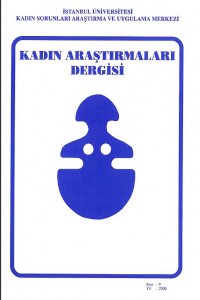Öz
Feminism can be defined as a movement aiming to alter the power relations between men and women. Other than the social, psychological and economic dimension, it is basically a political movement. Although the beginning of feminism goes back to the medieval, the general view is that, it starts in the 17th century in Britain. The motive behind the movement has been the new capitalist order. Firstly, women were imprisoned in the house or in the private realm as a result of the strict seperation of work and home. Secondly, when the men had political rights, women were left completely outside the society. First wave of feminists had the objective of gaining political, legal and civil rights, as well as having opportunity for education. This group has also been active in other political movements , such as socialism, anti-colonial nationalism or pacifism. Second wave started in the midts of 1960s and overspread successfully after 1968. The difference of the second wave feminists would not be satisfied with political rights, aiming the emancipation of women from the male dominated society. While the first wave covered mainly the legal and poitical areas, the second wave , by questioning the tradional role of women, covered the social realm as well. The most important characteristic of second wave has been its production of various feminisms, which are competing with each other. Liberal feminism is one of the first types of feminism. Although it was theoretically strong and popular, later on it has been seriously criticised. The paper focuses on liberal feminism, by looking at the opinions and discussions about leading liberal theoreticians such as Mary Wollstonecaraft, John Stuart Mill and Harriet Taylor. The article examines other feminisms in a comparative way with the aim of describing the liberal feminisms in a comparative way with the aim of describing the liberal feminism clearly. After trying to figure out the paradoxes between liberalism and feminisim, the paper concludes by examining the criticisms of liberal feminism.
Ayrıntılar
| Birincil Dil | Türkçe |
|---|---|
| Bölüm | Makaleler |
| Yazarlar | |
| Yayımlanma Tarihi | 13 Ekim 2010 |
| Yayımlandığı Sayı | Yıl 2006 Sayı: 9 |

